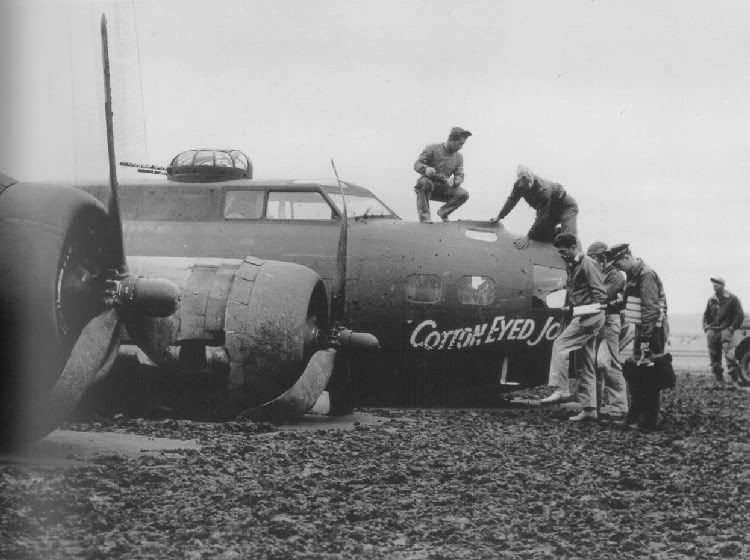-
When you click on links to various merchants on this site and make a purchase, this can result in this site earning a commission. Affiliate programs and affiliations include, but are not limited to, the eBay Partner Network.
You are using an out of date browser. It may not display this or other websites correctly.
You should upgrade or use an alternative browser.
You should upgrade or use an alternative browser.
Robert Capa B-17 crash photos
- Thread starter Peter Graham
- Start date
Phantomfixer
New Member
Yup greta photo! not a staged PR photo love the guy looking out the navigation/escape bubble
Phantomfixer
New Member
Dave,
My first thought was it was clipboard. I have seen, and have, old clipboards with multi colored wood strips...very good pic
My first thought was it was clipboard. I have seen, and have, old clipboards with multi colored wood strips...very good pic
TankBuster
Active Member
Great photos indeed. Love the mixed gear in the one.
Peter Graham
Well-Known Member
You're right Dave. Read this, courtesy of ArmyAirForces.comdmar836 said:Appears the one guy is wearing light-colored cowboy boots.
" There were two (2) Cotton Eyed Joes, both assigned to the 99th, 347th. The photos you see are of CEJ 42-29480 taken on the morning of 4 May 1943 after the ill-fated mission to Bizerte on the 3rd. Harry Burrell, squadron operations officer, was the pilot, Charles "Blackie" Covert was the regular pilot and had moved to the copilot seat for this mission. Jim Hager, regular pilot was bumped from the flight as was the regular bombardier Bill Barney. Art Cozine was the bombardier on this flight at the request of Burrell. Jack Cook flew his usual navigator position, Walt Schneider, Flight Engineer, John Kowzan, Ball Turret, George McCluskey, Tail, Jim Purnell, radio, Tom Garside, & Tom Shannon rounded out the crew.
The weather had the crew diverted to an advanced fighter field when they returned from Bizerte because of low ceiling, near zero visibility, and darkness. Upon flying back to Navarin the next morning the crew was told the new field was unfit for landing due to the rain and new dirt work on the runway. They were diverted to the 301st field and made a text book approach and landing according to eyewitness Norman Kaufman, (347th pilot). I have additional photos that support the theory Covert MAY have mistaken the main gear switche for flaps retract switch and the result was CEJ 42-29480 was plowing on the props and ball turret. 480 was resurrected from the slime, given new props and a ball and flew until it was declared 'war weary' when the 483rd arrived at Tortorella, Italy in late March '44. 42-29480 was traded for the new "G" 42-32097 on 31 March '44 and shot down by E/A on 18 December '44 on its 90th mission.
May 5, 1943 brings the new Vega 42-5769 to the 99th as a replacement and it is assigned to the 347th Covert crew. Thus CEJ II is born.
Covert was a devout Texan, (note the yellow cowboy boots in the second photo as Covert and Cook are walking toward the camera) and named both aircraft after the timeless country and western dance claiming, "If any airplane be as bodacious as that song I will surely return safely home." When the 99th was still in stateside training, the barber at the Warrior Hotel in Sioux City, IA demanded the bartender have the record removed from the nickelodeum as its constant play was giving the barber "a case of nerves".
As for confirmation of serial number data panels required to be visible in the same shot as the nose art for verification of authenticity I say, "Rub a lamp!" CEJ II survives to this day barely submerged off of Ajacio, Corsica after the Mike McDonnell crew was forced to ditch with two engines on 8 November '43. The original CEJ was traded (begrudgenly) to the 483rd BG on 31 March '44. Verified reports caught the aircraft back at the 99th in May '44, stripped of its armament and assigned to supply and shuttle duties. It survived the war only to be stricken from the records by the wrecker's hammer in September '45. "


